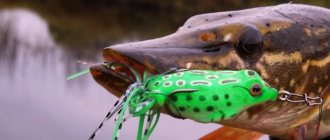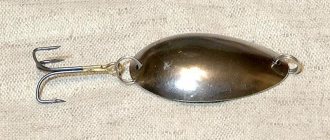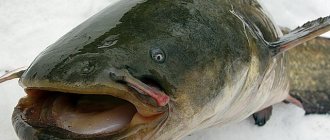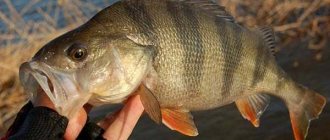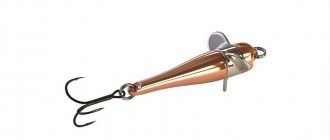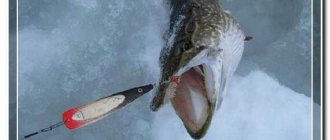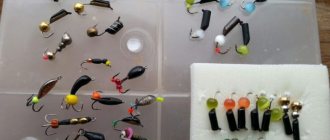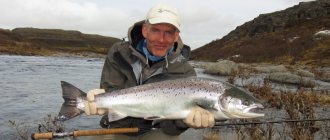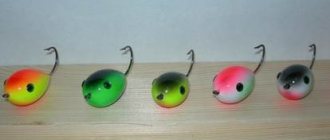On summer days, not hooking a pike causes a stir in the information space. Fishermen search, and the Internet responds, often showing conditionally working bait options for the sake of advertising and product promotion. However, in practice, few people work on pike. In this article we will look at the really best non-hooking pike fishing rods, which have been proven to catch toothy ones in the grass and snags.
Advantages and disadvantages of non-hooking
The Krasnodar non-hooking spinner accepts twitching, jig, uniform and other types of animation.
The main advantage of non-hooking spoons is obvious - they allow spinning anglers to work the most difficult places - toad beds, oxbows overgrown with grass, snags in rivers, swamps.
Also, the equipment features of non-hooking baits allow the use of new variants of posting and animation - jigs, twitching and their variations, with virtually no risk of losing expensive and/or rare baits.
Some non-snagging baits are combinations of a spinner and a twister, a spinner and a silicone fish, and others. This also expands the possibilities of using non-hooking devices.
Types of non-hooking pike hooks used and equipment options
In spinning fishing when hunting for pike, the following are used:
- solid iron non-hooking lures - spinners and spinners, spinnerbaits, gliders, cicadas and other “pieces of iron”;
- non-hooking wobblers and their combinations, poppers;
- jig baits on offset hooks, as well as rigs with a bullet - Carolina and Texas, retractable leash on offsets and others.
Protection against snags is possible in the following ways:
- The very shape of the bait . The spinner or wobbler is made in such a way that the likelihood of snagging is minimal.
- The method of fastening and installation, as well as the type of hook . Offset hooks are used, or regular baits hidden in the body. Used on spinners, jigs, foam rubber, wobblers.
- Placement of the hook in the body of the bait . Hooks hidden (recessed) into the body of the bait; singles, doubles and trebles with protective mustaches or hook latches on magnets until the moment of bite.
Let us separately highlight gliders - baits for fishing on the surface, with hidden hooks.
Non-snacking combinations for spinners
You can use an offset hook with a twister (Fig. 1b). And although the rubber “additive” itself attracts fish well, there are a lot of failures from such equipment - up to 80% with a weak bite.
Therefore, here it is better to use a twister in tandem with a “protected” single twister (Fig. 1c) - this option gives up to 50% success.
However, in order for the spinner to be fully used in combinations with various non-hooking baits, it must have a system for changing hooks or connecting other elements.
Non-snacking gliders and gliders for pike fishing: frog, Croatian egg and others
Gliders and gliders are definitely the best non-hooking gear for catching pike in the grass, which is close to the grass. Accordingly, they are used for surface fishing. In terms of colors, the situation is as follows - challenging colors work in muddy and cold water - yellow, tiger, red, black and yellow and the like. In light water during the summer they are more natural, although acidic ones should not be avoided.
Well-known and catchy ones include the following:
- Form factor Frog. Catching pike with an unhooked frog is always a fun and exciting activity (video below). But it’s worth mastering it without giving up at the first failures. Here it is important that all the stars come together - the bait, the reservoir, the mood of the fish and its attitude to the chosen animation. Specific Models:
- Swimming frog Kosadaka Target Frog. Silicone based bait. Weight 8.3 grams. Single offset hook. For overgrown toads, this is the best thing - it will pass through the grass, water lilies, and duckweed. It lures pike not only from the surface, but also from several meters, especially on a jerky, splashing retrieve. And what pike attacks directly on the surface are available to the spinning angler... Price from 200 rubles.
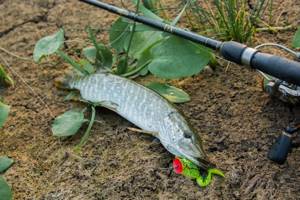
- Frog glider with legs from Kosadaka. Weight 10 grams. Silicone skirt on the double as an anti-catch. It works well on walking pike in water lilies, nettles, thistles, and also on chomping perch. Wiring - the easiest lazy twitch, stop-and-go, waves. Price from 250 rubles.
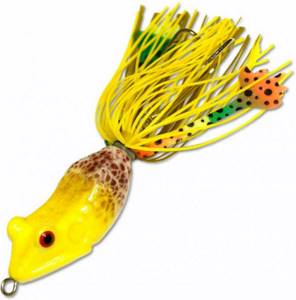
- Form factor Duck. In general, there are no special differences from frogs, except for the shape. But this factor in certain conditions can become decisive. Specific Models:
- Savage Gear 3D Hollow Duckling. A very original bait-toy for a child with removed hooks. With the rear tee removed, there is no snagging. When working correctly with the rod, it animates very coolly, either laying glides with smooth pulls with the rod, or imitating a wounded, disoriented duck with small jerks with the raised rod while simultaneously winding the cord. It collects even large pike well from long distances. Price from 600 rubles.
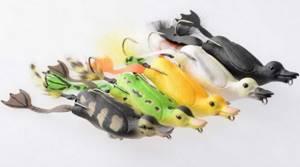
- Form factor Croatian egg. Specific Models:
- Bumble Lure. One of the most famous "eggs". Material: balsa. Lightweight, but catchy, extremely catchy and expensive. Works on duckweed and other vegetation directly on the surface. Popper wiring, pulls, gurgling uniformity. Prices from 200 rubles and above at flea markets, new ones can cost up to 1000 rubles and above.
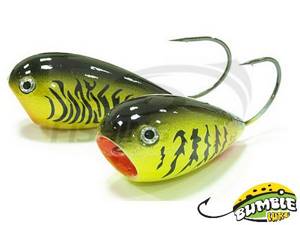
It should be taken into account that there is a large number of China among non-catching gliders and gliders, but this does not mean that it will not catch. It's worth experimenting and believing in yourself.
Minnow Spoon - an unhooked bait for all times
A. Okunevsky - Sport fishing Where there is aquatic vegetation, there is fish - everyone knows that. Here the water is calmer, and there is always something for the fry and “peaceful” fish to eat. But in the grass thickets, which sometimes cover some parts of the reservoirs with a continuous carpet, perch and pike are actively hunting, this is directly visible and audible even during periods of complete lack of bite in open water. However, not every spinning angler will risk catching fish in such difficult places. And therefore the predator feels safe here, and in theory, it will become bolder in taking the artificial bait.
In theory, this is good, but what kind of bait, practically? But there are a lot of “non-clinging” ones - very different. But now we will talk specifically about the Rapala Minnow Spoon, the main purpose of which is precisely fishing in dense thickets of algae, even in the water column, even on the surface, even among grass that is deadly for any bait with open hooks - reeds, horsetails and water lilies. And just in relatively overgrown shallow water, especially in spring and early summer, when the pike has not yet gone into the grass, standing more on its border, and thread-like algae do not make it possible to effectively use purely surface baits - poppers, for example. Or in a deep snag. Or among the sunken trees: on one autumn boat fishing trip I managed to carry, or rather, drag, a Minnow Spoon along the branches of a tree dropped by cunning fishermen at a depth of 3 m, and the only hook then happened to a pike... Let’s be familiar with the Finnish “non-catch” in shape - an elongated “spoon” "(Spoon) with variable body thickness, flattened from the sides, it imitates a fry (Minnow) - the natural prey of predators. Inside the plastic body, in the front part, there is a load (x-ray in photo 1 - from the Black Bass & Co website); This distribution of mass makes it possible for the bait to clearly “play” even when falling (the sinking speed is about half a meter per second) - while the reeling of the fishing line is stopped. Available in two versions: the first - in the form of a “non-hook” with a powerful single hook rigidly fixed relative to the body with a flat anti-hook spring in front of it (photo 2), and the second - with a triple hook, sometimes with a “fly” tied to it (photo 3).
The second option is mainly for trolling, the “track” shape is too long and narrow, but on the first, universal (both for casting fishing and for the same trolling), we will fix our attention, and then – only about it. Minnow Spoon has a good sweeping “game” - like a regular oscillating spoon, however, in the Rapala catalog it is placed in the “wobblers” section. But not a wobbler, that’s for sure - a volumetric “oscillator”. When retrieving, it always goes with the hook upward, swaying from side to side, and the spring prevents unwanted hooking of the spoon on obstacles. However, this spring protection is quite soft - even for a 100-gram perch it is not a problem to hang on the spoon.
Unfortunately, the release of the smallest “non-snappy” (5 cm) by Rapala - alas and ah! — suspended, only the tee option remains. And if now suddenly someone comes across RMS05 in domestic stores, these are old stocks.
| Model | Body length | Weight | Hook |
| RMS05 | 5 cm | 6 g | single with spring |
| RMST05 | 5 cm | 6 g | tee |
| RMS06 | 6 cm | 10 g | single with spring |
| RMST06 | 6 cm | 10 g | tee |
| RMS07 | 7cm | 15 g | single with spring |
| RMST07 | 7cm | 15 g | tee |
| RMS08 | 8 cm | 22 g | single with spring |
Who and how to offer it The main “consumers” of the Minnow Spoon in Russian waters are, of course, pike and perch, but they also caught salmon on shallow river riffles with strong currents, and pike perch in shallow lake places, and the smallest, 5-centimeter models (hey, Rapala marketers!) Even a rudd attacked in the continuous grass of the estuaries. And here is what advice the company’s specialists give on choosing the size of bait for catching the appropriate fish: RMS and RMST -5, -6, -7 - perch, trout; RMS and RMST - 7, - 8 - bass, salmon, pike perch, pike. As for the wiring of the Minnow Spoon, with the exception of fishing in grass thickets (which is discussed below), it is fundamentally the same as with all “spooners”. A uniform one, a monotonous one with small periodic stops, and a classic stepped one are also suitable, I even drove it along the surface - like a glider, and a lot of things, as much freedom for creativity as you want. Meanwhile, Rapala gives the following working wiring horizons: RMS-6 and RMST-5, -6 - depths up to 1 m; RMS-7, -8 and RMST-7 - 1 - 2 m. But these are their recommendations, but in reality - stepwise bottom wiring, for example, at depths and more, up to 5 m, is absolutely safe. Otherwise, you can just drag I'll spin the bait along the very bottom. This type of retrieving is done very slowly and with the rod tip lowered towards the water.
And although where painless use of other baits is possible, our “non-hooking” does not show any fabulous results, this does not exclude its work in open water, especially in an unfamiliar place where the structure of the bottom is not yet clear to the fisherman. This kind of scout turns out to be something like a “oscillator” with the tee removed, which has long been used by experienced spinners to detect predator sites. And it is very suitable for the “track”; moreover, it is considered, along with the Johnson Silver Minnow Spoon, among the best trolling lures in its class. By the way, it seems to me that it was Johnson’s “non-snag” (Fig. 1) that served as a prototype for Rapala designers: the same thickness difference (thicker in the middle, thinner at the edges) of the body, albeit all-metal, the same single spring, the same anti-snag spring . Therefore, I think it will not be amiss for the reader to know that the Johnson Silver Minnow Spoon, produced in Canada since 1920, has been successfully used since those ancient years and is still used for catching bass and common pike in fresh water, and sea bass and pike in salt water. salmon. And not only by simple casting or trolling, but also by jigging and twitching. Slow fishing in grass thickets was recommended (including when trolling), 15- or 20-pound fishing line, and a white twister was already attached to the hook. But the cone-shaped weighted head, which easily penetrates through the algae without collecting them, apparently came from another “ancestor” of the Rapalov product - the Texas jig rig. As a result, both in the grass and in snags, the Minnow Spoon is a cross-country champion.
Tackle and passions The hook itself (in the “sea” version, by the way, is made of anti-corrosion steel Perma Steel, which translates as “eternal steel”) must be periodically sharpened, and not only after several successful fishing by a predator, but also after active “ploughing” of grass or other thickets, as well as rocky bottom. Some users of the Minnow Spoon complain that the percentage of idle strikes and derailments of this “unhooked” is high, and they even undeservedly call it “unhooked”. And I will say this: use the appropriate gear, dear comrades. For example, with my favorite 10-gram rod I tried different models of spinning rods - both with the test, where the mass of my bait was in the middle of it, and where - on the upper limit. And in the end I settled on a model with a test range of 10-20 g, which not only reliably cut through the mouth of a predator, but also made it possible to literally tear it out of the grass as it ran away with the bait in its mouth. The length is around 2.1-2.5 m: both casting is needed, and the ability to circle obstacles, but longer is hardly advisable - they will still have to swing. Although thoughtless, throws in any direction are not needed here: from the shore, and wading, and from a boat - purposefully for a splash or a slurp. There is a nuance in the fishing technique “in the grass”: before splashing down the abandoned bait, but when it is still in flight, you should lower the line handle (if you are fishing with a “spinless” line) - in order to immediately pick up the slack in the cord, ensuring contact with the “non-snag” - just in case case: a bite can happen instantly. If it was not there, we begin wiring, choosing its type according to the circumstances. True, sometimes you have to “torture” a predator for a long time and tediously. Once in the Akhtubinsk “toad fishery” a pike, stunned by the heat, jumped out on the Minnow Spoon ten times in a row - and all from the same point, I was really exhausted, trying to pull the bait out as slowly as possible - no, it couldn’t hit it, it was such a bastard. Although this is a rarity. It is better to take a rod with a fast action, or at worst - a medium-fast one, which in combination with “braid” (in my case, with a breaking load of 8 to 12 pounds) is ideal, in my opinion. The most important thing in a spinning reel is the even, preferably cross-laying of the cord: the unevenness inherent in “grass” wiring, i.e. alternating the easy movement of the spinner through the thickets with short-lived but surmountable clinging in them can lead to the imperceptible formation of puffs - the harbingers of a “beard”
By the way, it would be good to try to keep the cord tight in this case. A good clutch will not hurt the reel, although in working condition it is twisted, but sometimes with its help it is necessary to compensate for the relative “bumpiness” of the spinning rod and the inextensibility of the “braid”. I personally use a diving “spinning reel” size 2500. As for a baitcasting reel, I haven’t fished with it, but I’ve seen how cleverly the Americans use it when catching their bass. Self-activity. Part 1 In addition, to improve detection, it is appropriate to make a small modification of the bait. It is known that if the directions of the axis of the hook tip are as close as possible to the vector of the traction force transmitted through the fishing line, then as a result the penetrating ability of the hook increases with a lower hooking force. At the same time, the holding capacity increases. Bend the eye of the hook accordingly and you will immediately feel the difference. But at the same time, the anti-hook spring will work worse, and with the bend that Rapala offers, grass will begin to get between it and the hook. Experience has shown that the bend of the spring must be changed as shown in photo 4 - and everything will fall into place.
By the way, in conditions of a shortage of 5-centimeter “non-catch”, I took RMST05, which is still found on the shelves, and either protected the tee with a thick fishing line (photo 5), or instead of a tee I put there either a single with a line or wire anti-catch, or an offset with twister. But, frankly speaking, the efficiency of work here is no longer the same. Specifics of casting and catching Minnow Spoon has a decent mass with a small elongated body size, which allows you to make a targeted (this is the key word!) long-distance cast even in windy weather. Well, far - this, of course, is relative, after all, this spoon is not intended for asp, but under the branches of bushes hanging over the water, I accurately hit the branches of bushes with 10 grams about 20 meters away, which I could not have done with an ordinary thin “spinner”, inevitably gliding at in flight, or with a wobbler. By the way, if you’re unlucky and after casting the Minnow Spoon ends up not in the water, but on the branches, don’t rush to frantically pull it from there, otherwise it may spin around the branch or even get caught by a hook if your bait overcomes the resistance of the spinner spring - and Sorry, goodbye, Minnow Spoon. You should carefully pull it to the nearest branch, upon contact, give it a slight tug, and if it jumps to another branch, repeat the manipulations. At the final stage of rescue, it is better when the spoon falls into the water under its own weight - and if you have not made a criminal noise before, a bite may follow from the one whose head your bait falls on the head like manna from heaven. By the way, similar actions are performed when catching pike that stubbornly stands in the reeds. Casting along the reed wall is then ineffective, and if you stand against it, it’s better not to be very close, and throw the Minnow Spoon directly into the thickets, on top of them - it doesn’t matter, as long as the cord lies on the grass - then slowly pull it up until the bait splashes from the stem into the water , then from the next one, etc., then the pike can respond in good faith. If, without touching it, it simply follows the spinner jumping from reed to reed, which is sometimes visible from the swaying of neighboring individual stems - lead the Minnow Spoon to the border with clear water with frequent stops; at the beginning of the next reeling, the toothy’s nerves may not be able to withstand it. But if this technique does not help, then there is still a possibility that the spinner will become familiar with pike teeth after it enters the operational space. The main thing is not to rush into retrieving, letting the predator realize that the prey is leaving from under her nose.
Self-activity. Part 2 Hooking a twister in its entirety (only a small one, slightly smaller than the size of the spinner itself) or part of it (if you take a model with a long tail, up to 5 inches in the original, along with the body) is also a good technique (see photo 2, 4). The Minnow Spoon’s “game” itself does not change significantly because of this, it just rolls over with less amplitude and goes more smoothly. But on the other hand, the tail of the twister makes additional oscillations that seduce the predator - the spinner becomes as if it were alive. This is very important when fishing in “windows” of grass in free fall. Using this technique, you can change the color scheme of the bait, in particular, choose a twister that is contrasting in color - then the “compound” will become better visible in muddy water or even in twilight water. I usually use white (good - pearlescent) and yellow twister in the dark, in good light - brown, red, orange, green. In addition, the attached twister lengthens the bait as a whole with a slight increase in mass. And the last thing: the detection rate, especially when fishing for pike in the grass, also increases, because The toothy one, as a rule, tries to grab the victim in the middle of the body, so it gets into the “joint” right into the hook, often pressing the anti-hook spring with its jaws - here you hook, know, without delay. A few words about the leash are appropriate at this point. When guiding the Minnow Spoon through large grass - reeds, reeds, water lilies, horsetails, elodea, hornwort, etc., as well as on clear water - it is better, of course, to place it. But as far as all the threads and other “snot” are concerned - now I’ll make an irresponsible statement - I’m removing the leash: it’s just tiring to constantly clean it of “sticky” grass. But I immediately double my vigilance and hook at the slightest hint of a pike attack. So far (and this has already been 5-6 years) God has been merciful - and there have been no losses of spinners due to a bite. By the way, polarized glasses are very helpful in seeing the early exits of a predator. And one more thing: in small-sized grass, I don’t really like the twister tail. As for the Minnow Spoon color line, of the 20 colors I know of in free or only partially vegetated water, I have most successfully used “roach” (BSH, RFSH, SD, SM), “crucian carp” GSD and “perch” P (on photo 6 - on the left in the top row RFSH, then - P, on the right in the middle row BSH). And in the thickets, I didn’t really bother with the selection of colors: the main thing is what is called “hit the head”, well, in very muddy water, sometimes I purposefully installed “irritants” CLT and FT. As you can see, the selection of colors for Russian conditions is quite classic. The protective coating itself on Finnish spinners is durable, with the exception of the new product - with a metallic sheen.
Take a look at photo 7 - this is what a GSD that catches very well looks like after three pikes, and next to it is a CLT that survived more than a dozen. But, oddly enough, even serious damage to the paint does not prevent the spoon from properly catching fish; in my arsenal, however, now in a “retirement” position, there is a completely shabby Minnow Spoon, which has become ivory-colored from old age, which still conscientiously fulfilled its duties responsibilities. In conclusion, a little about the Minnow Spoon “clones”. It itself is now produced in Finland and Estonia, and nowhere else. But on the market you can find these “non-hooking” ones made in China (in fact, only Blue Fox products are made in China), and Swedish (Fladen), and St. Petersburg. It seems that all these “clones” work, but there is always a small “but”: either the anti-catch spring is weak, or, on the contrary, it is too hard, then the hook instantly rusts, and the “game” is somehow more fidgety - in general, that’s all not thank God. But our domestic copyists went the furthest and developed their own original model - a one-and-a-half-gram "sponka" with a fishing line (it's in photo 8, you'll find it right away), which, in general, catches both in summer and winter - like a big jig .
What to choose from wobblers and how to equip a regular working bait
Losing a catchy and expensive wobbler is doubly unpleasant. Not only are they expensive, but they are often very rare. That’s why almost every spinner tries to protect his favorite wobbler from breaking.
Recommended non-hooking wobblers for pike:
- Rapala Weedless Shad. 80 mm, 16 grams. Another unique and easy-to-catch hook from Rapala. Equipped with a clearly fixed hook - single hook. Passes the strongest places. It swings its sides very beautifully both during the retrieve and during pauses - while slowly sinking. Works in the bushes. Price 550+ rubles.
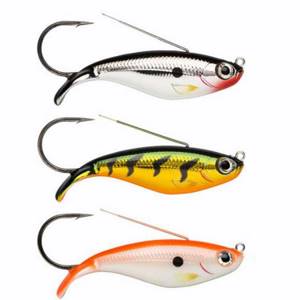
- Wobbler AmniHook. 66 mm, 8 grams. Equipped with offset from Ovner. Multi-component bait, consists of 8 baits in one. Soft foam and silicone, 4 pieces each. The first option (PSV foam) is used for fishing from the surface (water lilies, nettles, other grass, rafting on the river in areas where other baits cannot be thrown). The second (silicone baits) is used for fishing in the middle layers of the reservoir in strong places. Fishing places - from a quiet pond to a rapid. There are kits from 1000 to 5000 rubles.
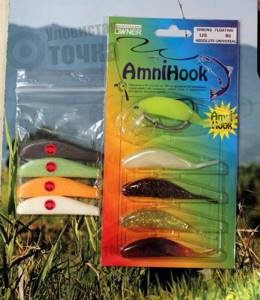
It should be noted that not many high-quality and catchy wobblers come off the assembly line; fortunately, almost any ordinary wobbler can be turned into a non-hooking wobbler on your own.
Hooks with protection
Ovner, Jamakastu and other manufacturers have such hooks. These tees or non-hooking doubles can be used to retrofit any wobbler. Similar hooks can also be equipped with vibrators and turntables.
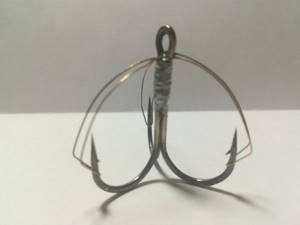
Loose fittings
The fittings (rings, hooks) are selected in such a way that they become a “thin spot”, that is, they unbend first, which allows for minimal losses when hooking.
For example, hooks from the ST Owner series are good.
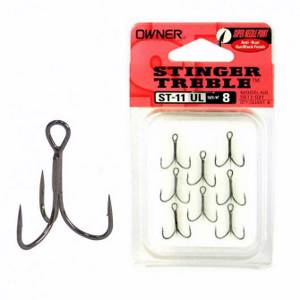
Wobbler wire protection
The type is the same as in the video, but any man with a vice and straight hands can bend such a mustache from a rigid wire.
Equipment for jig non-snagging lures for pike
It is easier to make a non-hooking jig bait for pike with your own hands by using appropriate rigging methods, hooks, jig heads and types of silicone.
The options are as follows:
- use of offset hooks;
- the use of anti-hook jig heads;
- options for equipping conventional hooks accordingly;
- options for non-snacking jig rigs.
Equipping baits with offset hooks
The most commonly used equipment option due to its convenience and simplicity. Most often it is used in conjunction with a “Cheburashka” load. Equipment options:
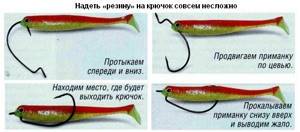

Offset jig bait with Cheburashka
Anti-snap jig heads
The highest quality ones are from Decoy. Equipping with jigs is carried out similarly to the previous option, but on a rigid coupling.
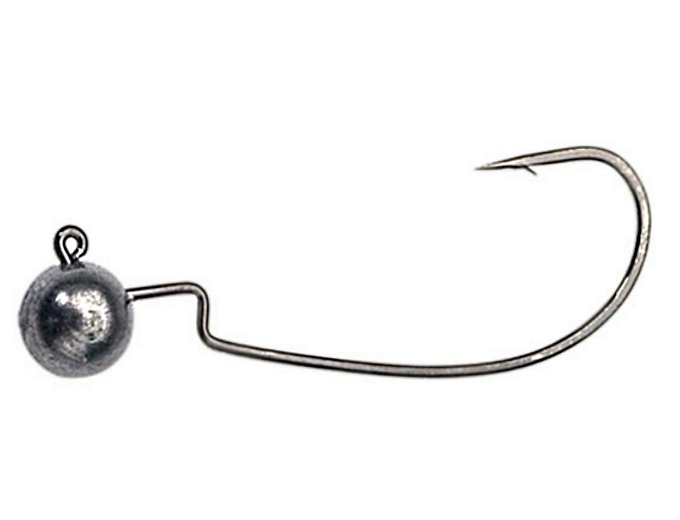
Decoy jig head
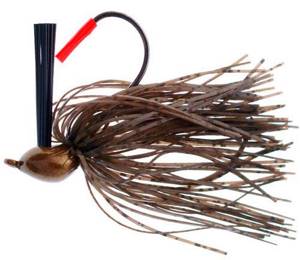
Non-hook collar
Equipped with regular hooks
You can use ordinary singles and doubles, but hidden inside the bait. Often used with worm-slug type baits.
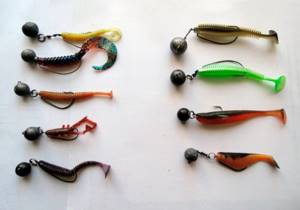
Profile jig equipment
Equipment designed for jig fishing in strong places. Texas, Carolina, lead and drop-shot rigs are the most famous and used.
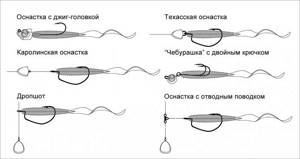
Unhooked spinners for pike
As mentioned earlier, the industry practically does not produce high-quality spinners with protection against snagging. But it’s easy to make a rotating spinner without hooking with your own hands.
Spinner with anchor with protection mustache:
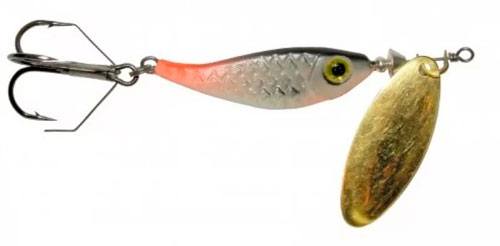
Offset and twister equipment:
How to make a non-hooking hook for a pike with your own hands:
Non-snagging hooks for spinners

Non-snacking rigs: a) tee with safety lock, b) offset hook with twister, c) single hook with safety lock and twister. Instead of a regular tee, you can install a single, double or triple hook with a safety mustache. Moreover, there will be much fewer derailments from a protected tee (Fig. 1a) than from the same single joint.
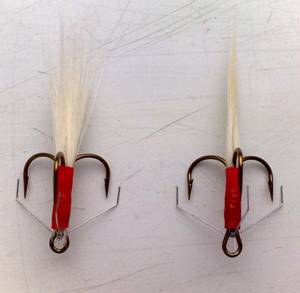
Tips for using non-snagging lures
It should be understood that no bait, even the highest quality, guarantees a catch if you do not have the proper knowledge and understanding of how to use it.
So, our recommendations:
- A non-hooking bait or equipment does not give one hundred percent guarantees, so there is a fight for madness. You should not throw bait into very difficult places.
- When re-equipping spinners and, especially, wobblers for non-hooking, you need to take into account that the game of baits may change.
- The hook should be sharper and more biting than when fishing with conventional bait.
- The stronger the fishing spot, the stronger the protection wire.
- The selection of a specific bait depends on the fishing conditions and the intended catch, as in normal conditions.
Purpose of a non-hooking spinner
Like any other fishing equipment, a non-snagging spoon has one purpose - to provide a large catch with minimal losses. Devices of this type are especially popular among spinning anglers who prefer to fish in difficult conditions. And this makes sense: in reservoirs with complex bottom topography, an abundance of stones and grass, there are always enough large fish.
Planing lures are suitable for depths of less than a meter
A non-hooking spinner not only allows you to successfully fish snags, but is also indispensable in shallow water. A significant number of small fish are always concentrated in shallow areas of reservoirs. Consequently, these are the favorite hunting grounds of predators. Experienced fishermen know that a non-hook is the first mate in frogweeds, wetlands and shallow waters. Here it allows you to successfully catch all possible pike sites.
Design features
The design of the non-hooking spinner should ensure its high maneuverability among various obstacles. In shape it is much like a small fish, but less convex. There are no traditional treble hooks for spinners, which minimizes the risk of snags, but does not guarantee their complete absence.
A single or double hook, covered with a metal layer, is installed on the non-hooking hooks. There are models with wire antennae, which are most often made from guitar string. When the spoon slides between stones and snags, the antennae prevent the occurrence of snags. When the wire comes into contact with a hard object, it springs slightly and pushes the lure away from the obstacle.
What types of fish is it intended for catching?
Non-hooking spinners are traditionally used for catching predatory freshwater fish:
- pike;
- schooling perch;
- soma;
- pike perch;
- burbot;
- bream;
- ide.
Beginners may mistake an encounter with an underwater obstacle for a bite.
This equipment is good wherever it is difficult to attract the attention of a predator with another bait. A non-hooking spinner is suitable for any reservoirs with difficult fishing conditions.
Using bait at different times of the year
A direct relationship between the time of year and the activity of freshwater predators has long been discovered. Immediately after the ice melts, the fish will go for any bait. During this period, it is recommended to use small, dim and fairly light spinners.
In the summer, vibrators and turntables are most effective. They are better than others at attracting the attention of a predator, shimmering under the rays of the sun. In the warm season, pike prefers to hide in the shade among snags and grass, so non-hooking hooks are indispensable for fishing. The color of the spoon is chosen depending on the color of the water, the weather, and the characteristics of the biting area.
